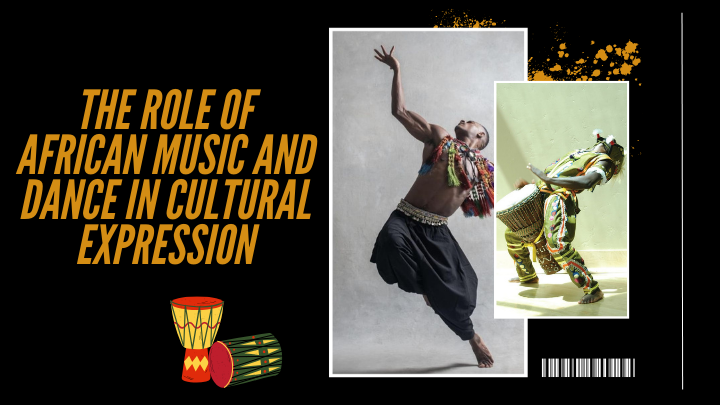Role of African Music and Dance
African music and dance are more than just forms of entertainment; they are vital expressions of culture, history, and identity. Across the African continent, music and dance serve as vehicles for storytelling, communication, celebration, and even social change. From the rhythmic beats of West African drumming to the graceful movements of East African traditional dance, these art forms are deeply woven into the fabric of African societies. As African communities have migrated to Australia, they have brought with them their rich musical and dance traditions, adapting and celebrating them in new ways while preserving the core elements that define their cultural identities.
In Australia, African music and dance have become a powerful means of cultural expression, fostering pride, unity, and connection among African Australians while also educating the broader community about the continent’s diverse cultures. This article explores the significance of African music and dance, the traditional and contemporary forms practiced today, and their impact on African identity and celebration in Australia.
1. The Significance of African Music and Dance
Music and dance are central to African life, with each community having its own unique styles, rhythms, and movements. These art forms are not just for entertainment; they are often used to communicate social and spiritual messages, mark important life events, and create a sense of belonging within a community.
- Communication: In many African societies, music and dance are integral to communication, serving as a medium to convey messages, tell stories, and express emotions. Drums, for example, are used to send messages between villages, communicate with ancestors, and accompany rituals.
- Social and Ceremonial Functions: African music and dance are often tied to social and ceremonial events such as births, weddings, funerals, and coming-of-age rites. These rituals are celebrated with music and dance to honor traditions, strengthen community bonds, and mark important life milestones.
- Healing and Spirituality: In various African cultures, music and dance are believed to have spiritual and healing powers. Dance is often used in religious ceremonies to connect with deities, ancestors, and spirits, while music can provide comfort, peace, and even physical healing.
- Cultural Identity: For African people, music and dance are powerful tools for expressing cultural identity and pride. These art forms carry the history, values, and beliefs of African communities and provide a sense of continuity between generations.
2. Traditional African Music and Dance
African music and dance are highly diverse, with distinct styles and traditions that vary from region to region. Some of the key elements of traditional African music and dance include:
- Rhythm: African music is known for its complex, polyrhythmic structures—multiple rhythms occurring simultaneously. Drums are the backbone of African music, and the drumbeats often dictate the movements and flow of the accompanying dance. Drumming is used in both ceremonial and celebratory contexts and can vary widely depending on the region or ethnic group.
- Instruments: Traditional African instruments include the djembe (a goblet-shaped drum from West Africa), the balafon (a type of wooden xylophone), the kora (a stringed instrument), and the mbira (a thumb piano). These instruments create intricate melodies and rhythms that form the foundation of African music.
- Dance Movements: African dance is characterized by its dynamic and expressive movements, often involving the entire body. The hip and waist are central to many African dance forms, with movements reflecting the rhythms of the music. For instance, in West African dances, the movements may be fast and energetic, while East African dances are often more graceful and fluid.
- Song and Call-and-Response: Singing is a vital component of African music, with many songs involving a call-and-response format. The lead singer or drummer will call out a phrase, and the community or audience will respond, creating an interactive and participatory experience. This is a way of involving the entire group in the performance, reinforcing the collective nature of African culture.
3. Contemporary African Music and Dance
As African communities have spread across the globe, traditional music and dance have evolved and fused with other musical genres, leading to the emergence of contemporary forms that appeal to a broader, often younger audience. African music and dance today reflect the fusion of traditional sounds with influences from the global music scene.
- Afrobeat: One of the most popular contemporary African music genres, Afrobeat blends traditional African rhythms with jazz, highlife, funk, and hip-hop. Artists like Fela Kuti from Nigeria pioneered the genre, and today artists such as Wizkid, Burna Boy, and Davido have brought Afrobeat to international acclaim. This music often incorporates socially and politically charged lyrics, addressing issues such as inequality, corruption, and African identity.
- Hip-Hop and Rap: African youth have embraced hip-hop as a form of cultural expression, blending local languages and rhythms with global beats. The African hip-hop scene has grown immensely, with artists such as M.I. Abaga from Nigeria and Nasty C from South Africa gaining popularity worldwide. Hip-hop provides a space for young African Australians to speak out about their experiences, struggles, and aspirations.
- Dancehall and Reggae: Dancehall and reggae have strong followings across Africa and in African diaspora communities. These genres originated in Jamaica but have found significant expression within African communities, with artists such as Diamond Platnumz and Sean Paul blending Caribbean rhythms with African sounds. Dancehall’s energetic rhythms often influence African dance styles, leading to vibrant dance trends.
- Modern Dance Styles: Contemporary African dance has evolved to incorporate both traditional and urban styles. In cities like Johannesburg, Nairobi, and Lagos, young dancers are creating hybrid dance forms that draw from hip-hop, Afrobeat, and traditional African dance. Styles like Azonto, Shaku Shaku, and Gwara Gwara have become popular worldwide and are often featured in music videos and social media challenges.
4. African Music and Dance in Australia
In Australia, African music and dance are essential to the cultural expression of African Australians, serving as a way to maintain cultural identity and celebrate African heritage. African communities across the country use these art forms to stay connected to their roots while adapting them to the Australian context.
- Community Festivals and Events: African festivals and cultural events are common in Australia, with music and dance taking center stage in these celebrations. Events such as the Africa Day Festival in Melbourne, the Sydney African Festival, and the Brisbane African Music and Cultural Festival all feature performances by African artists and dance troupes. These festivals offer a platform for both traditional and contemporary African music and dance, allowing African Australians to showcase their talents and share their culture with the broader community.
- Dance Schools and Workshops: Many African Australians are involved in teaching African dance styles to younger generations through workshops and dance schools. These dance schools provide a space for young people to learn traditional African dances, such as the Adumu (the Maasai jumping dance) and the Morris Dance (a popular dance from West Africa), while also incorporating modern dance styles like hip-hop and Afrobeat.
- Cultural Expression Through Social Media: With the rise of social media, African music and dance have become global phenomena. Platforms like Instagram, TikTok, and YouTube allow African Australians to share their performances with the world. Whether it's posting dance challenges or live music performances, social media has become an important tool for African Australians to express their culture and connect with others who share their passion for African music and dance.
- African Music in the Australian Music Scene: African artists have also begun to make their mark in the Australian music industry. From Afrobeat artists performing in local clubs to African-inspired music being incorporated into mainstream Australian pop, African music is finding a wider audience in Australia. Australian artists, too, are increasingly collaborating with African musicians to create cross-cultural musical projects that reflect the growing cultural diversity of the country.
5. Impact on Cultural Identity and Celebration
African music and dance are crucial in maintaining cultural identity for African Australians. For the younger generation, these art forms provide a link to their heritage, helping them understand where they come from and fostering a sense of pride in their cultural background. By participating in music and dance performances, young African Australians strengthen their connection to Africa while navigating their identity within Australian society.
Moreover, African music and dance play a significant role in celebrating African cultures in Australia. Through public performances and community events, African Australians are able to share their culture with the wider Australian public, breaking down cultural barriers and promoting greater understanding and appreciation of African heritage.
African music and dance are central to the cultural identity of African Australians. From traditional rhythms and movements to contemporary genres and fusion styles, music and dance offer a powerful means of cultural expression. Through public festivals, dance workshops, and digital platforms, African music and dance continue to thrive in Australia, allowing African Australians to maintain their cultural heritage while contributing to the nation’s rich multicultural landscape. By embracing both tradition and innovation, African music and dance are celebrated not only as a form of entertainment but as a testament to the resilience, creativity, and unity of African communities worldwide.



